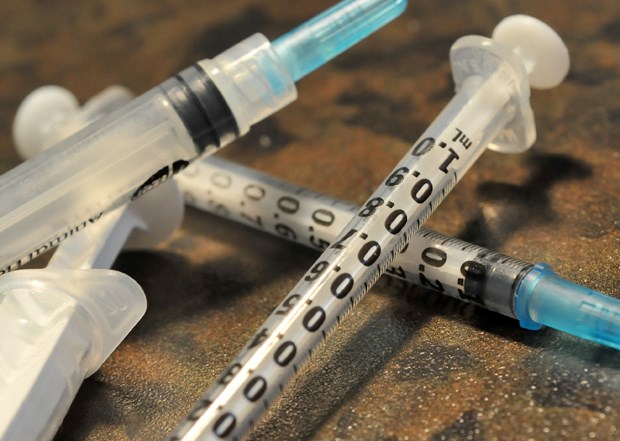What started as a cost-cutting measure employed by drug dealers has turned into a public health disaster.
Provincial health officer Dr. Perry Kendall declared an unprecedented emergency earlier this month in an attempt to stem the rapidly rising levels of fentanyl-related deaths in B.C.
“We’re definitely in the middle of a crisis,” said North Shore public health officer Dr. Mark Lysyshyn.
January was B.C.’s worst month for fatal overdoses in at least a decade, in large part because of fentanyl. The synthetic painkiller was a factor in 36 of the 76 overdose deaths during the first month of the year, according to B.C. Coroners Service.
Rather than buying heroin, cocaine or oxycodone, drug users are increasingly being swindled and sold a drug that’s been laced or replaced with fentanyl – which is 50 times as toxic, according to a statement from Vancouver Coastal Health.
There have been seven fentanyl-related deaths on the North Shore since 2013, including the Lower Lonsdale parents of a two-year-old son.
Hardy and Amelia Leighton, 31 and 30, were suspected to have lost consciousness after snorting fentanyl-laced drugs in July of 2015. At the time of the couple’s death, health officers only had access to information on fatal overdoses. The new measures give officers up-to-date data on all overdoses, allowing for preventative treatment.
“We need to know exactly where people are dying so that we can make interventions,” Lysyshyn explained.
In the event a drug user walks out of a hospital after being treated for an overdose, health officers can investigate for conflicting prescriptions, offer treatment, and provide naloxone, an antidote to opioid overdose.
“Are they referring people to take home naloxone programs, are they getting them into drug treatment programs?” Lysyshyn asked of hospital staff. “We don’t know if they’re doing those things. Sometimes I’m sure they are, and other times not.”
In 2012, five per cent of overdose deaths in B.C. involved fentanyl. By 2015, that number shot up, with the B.C. Coroners Service pointing to fentanyl as a factor in 31 per cent of overdose deaths.
There have been 64 fentanyl-related deaths in the first three months of 2016. That figure is 73 per cent higher than the first three months of 2015. One of the reasons for the drastic uptick is that a few fentanyl capsules can be imported into Canada and turned into “100 times” as many pills, said Lysyshyn.
Some cutting-edge fentanyl compounds are legal to import, added the doctor. “They’re so new that they’re not even incorporated into Controlled Drugs and Substances Act.”
Fentanyl is prescribed to control severe pain, but illegal versions of the white powder are showing up in liquid, powder and pill form, according to Vancouver Coastal Health.
The crisis may prompt Canada to change the way it deals with addiction, according to Lysyshyn.
“There’s various legal barriers to us doing some of the things that we think would help prevent death,” he said, identifying Conservative-backed Bill C-2 as a hurdle to setting up supervised injection services. “Hopefully, declaring an emergency like this … will break down some of those legal barriers to being able to help people.”
Signs of an overdose include severe sleepiness, slowed heart rate, trouble breathing and cold, clammy skin.
Naloxone shields brain receptors from opioids for up to 90 minutes, preventing brain damage. The antidote does not work for overdoses of cocaine, alcohol or non-opioids. Naloxone is available at the Health Connection Clinic, on East 15th Street in North Vancouver.



